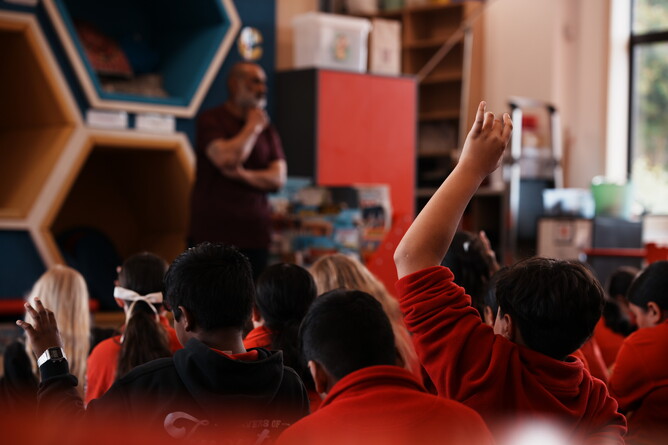Why would busy teachers include an emotional literacy programme in their timetable? Another way to consider this is to ask the inverse question – what happens in classes where emotional literacy isn’t included as a class programme? Let’s do some time travel to ponder this question.
When I was a junior student in our local primary school an incident occurred that has stayed with me for nearly 60 years. The bell to return to class had rung and all the junior children were lining up in tidy, silent lines waiting for teachers to return from the staffroom. Some of the children in our class were messing around, still having fun whilst they waited for the teacher. The teacher wasn’t impressed by their behaviour and once we were inside, she had those children stand in front of the class whilst she told them off. One boy she named, telling him that he needed to ‘pull his socks up’. Which he took literally and bent down to straighten his socks.
Something about that boy bending meekly to pull his socks in front of all his classmates stayed with me. The slump of his shoulders and the blush of colour in his cheeks whilst his eyes stayed focused on the floor spoke volumes.
These days as I work with teachers in the field and students in our university Initial Teacher Education programmes, I see now how teachers consider the emotions of their students much more and I believe that this type of incident is less likely to happen. Teachers today are introduced to the work of educationalists such as Dr Thomas Gordon, Bill Rodgers and Dr. Jane Bluestein who have focused on emotional aspects of behaviour management and learning.
Teachers are now far more aware that how students feel will dictate their behaviours. Their emotions have a profound impact on their ability to learn. But many children don’t understand and manage emotions well. This can negatively impact an entire class and contribute to poorer mental well-being.
In 2025 children come into our classrooms with a need to be kept safe, inferring that they need adults who can set and keep boundaries whilst building children’s self-esteem and self-responsibility. It’s no small ask. Curiously, the place of emotional literacy is now being recognised as a significant aspect of developing children’s self-responsibility skills which they need to learn well with resilience to cope with failure.
So, what can teachers do to develop the emotional literacy skills of their students?
Here are 6 tips to use:
Teach Emotional Vocabulary - Feeling frustrated is different from feeling angry. When students know precise names for nuances of emotions, they can name them more accurately, getting more appropriate help. This helps lower the intensity of the emotion.
Practice Empathy – Some teachers used to discipline their students using power and authority in destructive ways leading to shame and worsening behaviour. When teachers are now seen practising empathy with effective communication skills, the needs of the students and the teacher are met in respectful ways.
Promote Self-Awareness – Programmes such as You Good? You Good? E Pai Ana Koe? E Pai Ana Koe! provide opportunities for the whole class to learn about the intensity of emotions, how to name and manage these emotions.
Integrate Activities – Mental wellbeing is best taught through an experiential, integrated programme so that students see how their mental wellbeing is part of everyday activities and can be managed in easy to do ways, which lessens the likelihood of explosions or meltdowns.
Encourage Communication - Modelling and encouraging communication can help get needs met with understanding. When students are encouraged to talk and are listened to by their teacher and fellow students there is a sense of ‘we’re in this together’ which lessens any anxiety of being in an unsupportive environment.
Provide Supportive Resources – Supportive resources can be as simple as a set of laminated cards with emotions named and pictures of accompanying facial expressions. Students can display these on their desks and change them throughout the day to quickly inform others of how they are feeling.
In 2025, including emotional literacy within a classroom programme will undoubtedly enhance teachers’ ability to teach. Gaining fluency in personal and interactive skills will support students in their learning. However, just like any other literacy skill set, emotional literacy skills need to be learned and practised in a safe, supportive environment and the classroom is the ideal place. Playground behaviours can also be influenced through teaching emotional literacy in class. Which brings us back to the boy in my junior class in the 1960s. How different it might have been for him, for our teacher and for his classmates who watched him feeling ashamed if they had had a shared understanding of people's emotions, needs and ways to communicate effectively.
Written by Andrea O’Hagan, Co-Founder of the Jade Speaks Up Educational Trust.
Additional resources worth reading:
Bluestein, J. (2001) Creating emotionally safe school: A guide for Educators and Parents. Health Communications
Gordon, T. (1974) T.E.T. Teacher Effectiveness Training Fodor's Travel
Rogers, B. (1995) Behaviour Management: A whole school approach Ashton Scholastic

